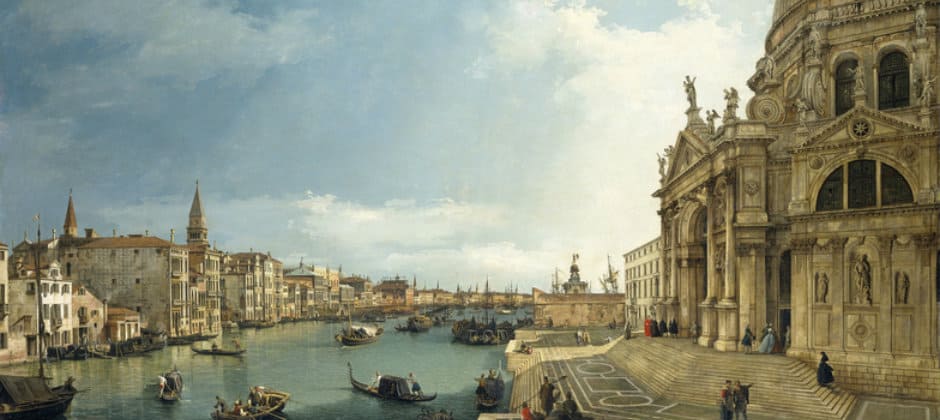
MADONNA DELLA SALUTE FEAST
Every year, on 21 November, thousands of Venetians – including those who have moved to the mainland for a long time now – come on a pilgrimage to the Madonna della Salute.
MADONNA DELLA SALUTE
An infinite row of people crosses the votive bridge to light the long candles inside the Basilica della Madonna della Salute. They brave the fog and the cold either on faith or just to carry on the tradition. It is a day filled with spirituality, history and memory. The Festa della Salute is not just a religious celebration, but it is the festival for all Venetians to celebrate life by remembering death.
In the vicinity of the church, the stalls attract the youngest with caramel fruits, cotton candies and colored balloons. In the last few years, the typical sailboat “Nuovo Trionfo” docks at Punta della Dogana carrying the plague doctor, escorted by the Bastazi, the porters of the Custom, who burns herbs to purify the air. After this ceremony, the traditional Castradina soup is served.
Come over and taste our Chef’s recipe!

WHY DO VENETIANS CELEBRATE THE MADONNA DELLA SALUTE?
THE PLAGUE
In the years between 1630 and 1631, the plague devastated Venice with great ferocity.
It all began in the beautiful city of Mantua. This city was fighting on two fronts: from the outside, the lansquenetes’ assaults; from the inside, the plague was claiming its first victims. Fearing that the emperor Ferdinand II could easily get the better of them, Marquis Alessandro Strigi was sent to Venice as an ambassador to ask for help.
During the trip, the Marquis’ entourage was halved and what remained of the Mantua delegation arrived in Venice on July 8, 1630. The Venetian Sanitary Magistrate prevented them from entering the city and forced them to spend a quarantine period on the Island of San Clemente. After just a few days the Ambassador became ill and died on July 14.
On San Clemente island, there were two carpenters from Sant’Agnese parish, father and son, who were carrying out some maintenance work on behalf of the Magistrate. They had no signs of illness, so they were allowed to go back in town. They brought back some clothes to have them cleaned by a woman who fell ill a few days later.
The disease spread rapidly in Sant’Agnese, and the Venetian Public Health Commission began to fear for the safety of the town. The sick people were sent to the island of San Lazzaro and, on August 23, the Senate called a committee of thirty-six doctors to investigate about the real nature of the disease. Unfortunately, these thirty-six doctors divided into two factions with two opposing views: those who believed that it was bubonic plague and those who believed it was not.
The town found itself in a heated and intense discussion but all this caused a delay in reducing the rate of spread of the disease. While the doctors were discussing and the magistrates were left in uncertainty, the plague multiplied its victims and at that point it was no longer possible to stop the contagion.
During sixteen months, 46,490 people died in Venice; In Murano, Malamocco and Chioggia the dead were 47,746. The total mortality was 94,236 people. An immense number!
On November 21, 1631, with great solemnity, Venice was declared free of plague.
For this occasion, it was vowed to build a magnificent temple to honor the Madonna della Salute (Madonna of the health).
The first stone was placed on April 1, 1631 and the architect responsible for the project was Baldassarre Longhena. The construction, however, lasted so long to prevent Longhena from seeing its consecration 56 years later, on November 9, 1687, five years after his death.
Since then, the dome of the Basilica of Salute characterizes the scenery of the San Marco basin in Venice and it is one of the most beautiful examples of Baroque architecture in the city. Looking at its curls, its majestic staircase, its 60-meter-high dome, you cannot help but think of the incredible weight that the 100,000 wooden poles can hold, a submerged forest that allows the building to stay where it is.
There is a secret hidden behind the construction of the Basilica. The architect Longhena was the son of a Jew and he learned from his father many secrets of the Cabala. The Basilica’s body is octagonal, and in the Christian tradition number 8 symbolizes the rebirth, in this case the rebirth of Venice after the plague. Number 11 is also a recurring number inside the Basilica and in the Jewish tradition it has a negative value and it seems it could represent the plague.





 HOTEL CARLTON CAPRI
HOTEL CARLTON CAPRI LA CUPOLA RESTAURANT
LA CUPOLA RESTAURANT TOP OF THE CARLTON SKY LOUNGE
TOP OF THE CARLTON SKY LOUNGE HOTEL CARLTON ON THE GRAND CANAL
HOTEL CARLTON ON THE GRAND CANAL

















